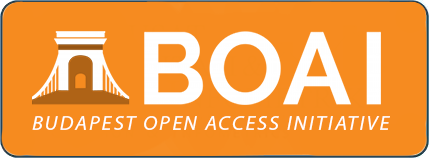Examining Student Preferences in Online Learning: Enabling Camera vs. Disabling Camera and Recorded Videos vs. Live Online Meetings
Memeriksa Keutamaan Pelajar dalam Pembelajaran dalam Talian: Mengaktifkan Kamera vs. Mematikan Kamera dan Video Dirakam vs. Mesyuarat dalam Talian Secara Langsung
DOI:
https://doi.org/10.33102/sainsinsani.vol9no2.637Keywords:
Online learning, video conferencing, recorded video, live videoAbstract
Abstrak: Owing to the onset of the COVID-19 pandemic, the majority of educational institutions decided it was necessary to transition to online learning platforms as a means to ensure the continuity of students’ education during this period. However, the attitudes and perceptions of students towards these online learning platforms and video conferencing applications have remained a relatively underexplored area, largely due to the recent development of the pandemic. As such, the objectives of the present study are to determine the tendency of UiTM, Permatang Pauh students towards turning on their cameras during virtual instructional sessions, and to examine the preferences of university students on their preferred mode of learning; either videos or live online meetings. This study adheres to a quantitative research design and utilizes a survey instrument, which was administered to a sample of 103 students from UiTM, Permatang Pauh, Pulau Pinang recruited using convenience and snowball sampling. The survey outcomes reveal that a significant portion of the respondents (58.2%) expressed a reluctance to turn on their cameras during online learning, citing concerns regarding their personal appearance. Notably, a sizeable minority (34%) remained uncertain about their preferences in this regard. In summary, the survey outcomes indicate a prevalent hesitance among students to activate their cameras during online learning, primarily due to concerns about personal appearance. Thus, understanding and addressing these concerns can create a more inclusive and supportive online learning environment, leading to enhanced student engagement and overall satisfaction in virtual classrooms.
Abstrak: Disebabkan oleh penularan pandemik COVID-19, majoriti institusi pendidikan memutuskan untuk beralih ke platform pembelajaran dalam talian sebagai langkah untuk memastikan kesinambungan pendidikan pelajar sepanjang tempoh ini. Walau bagaimanapun, sikap dan persepsi pelajar terhadap platform pembelajaran dalam talian dan aplikasi persidangan video masih merupakan perkara yang kurang diterokai, terutamanya disebabkan oleh perkembangan pandemik yang baru-baru ini. Oleh itu, objektif kajian ini adalah untuk menentukan kecenderungan pelajar UiTM, Permatang Pauh untuk menghidupkan kamera mereka semasa sesi pengajaran secara maya, serta meneliti pilihan pelajar universiti terhadap mod pembelajaran yang mereka gemari; sama ada melalui video rakaman atau pembelajaran dalam talian secara langsung. Kajian ini menggunakan reka bentuk penyelidikan kuantitatif dan instrumen kaji selidik, yang diedarkan kepada sampel seramai 103 pelajar dari UiTM, Permatang Pauh, Pulau Pinang yang direkrut menggunakan teknik persampelan mudah dan bola salji. Hasil kajian menunjukkan bahawa sebahagian besar responden (58.2%) menyatakan keengganan untuk menghidupkan kamera mereka semasa pembelajaran dalam talian, dengan alasan kebimbangan terhadap penampilan peribadi mereka. Menariknya, sebahagian kecil (34%) masih tidak pasti mengenai pilihan mereka dalam hal ini. Secara ringkas, hasil kaji selidik menunjukkan terdapat keengganan yang ketara dalam kalangan pelajar untuk menghidupkan kamera mereka semasa pembelajaran dalam talian, terutamanya disebabkan oleh kebimbangan terhadap penampilan peribadi. Oleh itu, memahami dan menangani kebimbangan ini dapat mewujudkan persekitaran pembelajaran dalam talian yang lebih inklusif dan menyokong, yang seterusnya meningkatkan penglibatan pelajar dan kepuasan keseluruhan dalam kelas maya.
Downloads
References
Adnan, M., & Anwar, K. (2020). Online learning amid the COVID-19 pandemic: Students’ perspectives. Journal of Pedagogical Sociology and Psychology, 2(1), 45-51. https://doi.org/10.33902/JPSP. 2020261309
Alchamdani, A., Fatmasari, F., Rahmadani Anugrah, E., Putri Sari, N., Putri, F., & Astina, A. (2020). The Impact of Covid19 Pandemic on Online Learning Process in the College at Southeast Sulawesi. Jurnal Kesehatan Lingkungan, 12(1si), 129. https://doi.org/10.20473/jkl.v12i1si.2020.129-136
Al-Samarraie, H. (2019). A Scoping Review of Videoconferencing Systems in Higher Education: Learning Paradigms, Opportunities, and Challenges. International Review of Research in Open and Distributed Learning, 20(3), 121-140. https://doi.org/10.19173/irrodl.v20i4.4037
Aulakh, K. K., Aneja, P. S., Saha, S., & Bansal, S. (2021). Comparing the effectiveness of live online lectures vs recorded video lectures as means of learning in medical education during covid 19 lockdowns. International Journal of Current Research and Review, 13(15), 65. DOI: https://doi.org/10.31782/IJCRR.2022.141311
Basaran, B., & Yalman, M. (2020). Examining university students” attitudes towards using web conferencing systems in distance learning courses: A study on scale development and application. Knowledge Management & E-Learning, 12(2), 209–230. https://doi.org/10.34105/j.kmel.2020.12.011
Campbell, S., Greenwood, M., Prior, S., Shearer, T., Walkem, K., Young, S., Bywaters, D., & Walker, K. (2020). Purposive sampling: complex or simple? Research case examples. Journal of Research in Nursing, 25(8), 652-661. DOI: 10.1177/1744987120927206.
Candarli, D., & Yuksel, H. G. (2012). Students” Perceptions of Video-Conferencing in the Classrooms in Higher Education. Procedia - Social and Behavioral Sciences, 47, 357–361. https://doi.org/10.1016/j.sbspro.2012.06.663
Chung, E., Subramaniam, G., & Dass, L. C. (2020). Online Learning Readiness Among University Students in Malaysia Amidst Covid-19. Asian Journal of University Education (AJUE), 19, 46–58. https://doi.org/10.24191/ajue.v16i2.10294
Coman, C., ȚîRu, L. G., Meseșan-Schmitz, L., Stanciu, C., & Bularca, M. C. (2020). Online Teaching and Learning in Higher Education during the Coronavirus Pandemic: Students’ Perspective. Sustainability, 12(24), 10367. https://doi.org/10.3390/su122410367
Correia, A. P., Liu, C., & Xu, F. (2020). Evaluating videoconferencing systems for the quality of the educational experience. Distance Education, 41(4), 429-452. https://doi.org/10.1080/01587919.2020.1821607
Creswell, J. W., & Creswell, J. D. (2022). Research design: Qualitative, quantitative, and mixed methods approaches (6th ed). SAGE Publications, Inc.
Cristel, R. T., Demesh, D., & Dayan, S. H. (2020). Video conferencing impact on facial appearance: looking beyond the COVID-19 pandemic. Facial Plastic Surgery & Aesthetic Medicine, 22(4), 238-239. DOI: https://doi.org/10.1089/fpsam.2020.0279
Farsace, B. (2020). How to look your best on a video call. The Verge. https://www.theverge.com/2020/4/8/21202907/zoom-tips-video-calllighting-audio-look-your-best
Fatani, T. H. (2020). Student satisfaction with videoconferencing teaching quality during the COVID-19 pandemic. BMC Medical Education, 20(1), 1–8.
https://doi.org/10.1186/s12909-020-02310-2
Gherhes, V., Simon, S., & Para, I. (2021). Analysing students’ reasons for keeping their webcams on or off during online classes. Sustainability, 13, 3203. https://doi.org/10.3390/su13063203
Gladović, P., Deretić, N., & Drašković, D. (2020). Video Conferencing and its Application in Education. Journal of Traffic and Transport Theory and Practice, 5(1). https://doi.org/10.7251/jtttp2001045s
Hair, Jr., J. F., Black, W. C., Babin., B. J., & Anderson, R. E. (2019). Multivariate data analysis (8th ed). Cengage Learning.
Huang, R., Liu, D. J., Tlili, A., Yang, J., & Wang, H. (2020). Handbook on facilitating flexible learning during educational disruption: The Chinese experience in maintaining undisrupted learning in COVID-19 outbreak. Smart Learning Institute of Beijing Normal University.
Islam, M., Kim, D. A., & Kwon, M. (2020). A comparison of two forms of instruction: Pre-recorded video lectures vs. live ZOOM lectures for education in the business management field. Sustainability, 12(19), 8149. DOI:10.3390/su12198149
Jones, K., & Sharma, R. (2020). On reimagining a future for online learning in the post-COVID era. SSRN. http://dx.doi.org/10.2139/ssrn.3578310
Jun, B. (2023). Learning behaviors and learning effects in on-line pre-recorded video lecture. Pegem Journal of Education and Instruction, 13(4), 208-213. DOI: 10.47750/pegegog.13.04.25
Kuznekoff, J. H. (2020). Online video lectures: the relationship between student viewing behaviors, learning, and engagement. AURCO Journal, 26, 33-55.
Lakhal, S., Khechine, H., & Pascot, D. (2013). Student behavioural intentions to use desktop video conferencing in a distance course: integration of autonomy to the UTAUT model. Journal of Computing in Higher Education, 25(2), 93–121. https://doi.org/10.1007/s12528-013-9069-3
Lange, C., & Costley, J. (2020). Improving online video lectures: learning challenges created by media. International Journal of Educational Technology in Higher Education, 17, 1-18. DOI: https://doi.org/10.1186/s41239-020-00190-6
Leskin, P. (March 19, 2020). There’s a filter on Zoom you can use to look better on video calls while working from home. Here’s how to turn on the setting. Business Insider. https://www.businessinsider.com/zoom-videoconferencing-filter-touch-up-work-from-home-coronavirus-2020-3
Mukhtar, K., Javed, K., Arooj, M., & Sethi, A. (2020). Advantages, limitations and recommendations for online learning during covid-19 pandemic era. Pakistan Journal of Medical Sciences, 36(COVID19-S4), S27–S31. https://doi.org/10.12669/pjms.36.COVID19-S4.2785
Othman, M. I., Sulaiman, S., Najib, M. N. M., & Ismail, W. N. H. W. (2022). Forced online and distance learning (ODL) during Covid-19 pandemic: Revealing students’ perceptions and experiences. Asian Journal of University Education, 18(4), 894-905.
Paderanga, L. D. (2014). Classroom Video Conferencing: Its Contribution to Peace Education. Procedia - Social and Behavioral Sciences, 123, 113–121. https://doi.org/10.1016/j.sbspro.2014.01.1404
Park J. J., & Kim E. J. (2021). An analysis of the perception and needs of professors and learners on the online classes: focusing on the case of p university. The Journal of Educational Information and Media, 27(1). 341-369. DOI: https://doi.org/10.15833/KAFEIAM.27.1.341
Pham, A. T. (2022). Engineering students' perception of using webcams in virtual English classes. International Journal of Engineering Pedagogy, 12(6), 115-127. https://doi.org/10.3991/ijep.v12i6.33317
Rapanta, C., Botturi, L., Goodyear, P., Guàrdia, L., & Koole, M. (2020). Online University Teaching During and After the Covid-19 Crisis: Refocusing Teacher Presence and Learning Activity. Postdigital Science and Education, 2(3), 923–945. https://doi.org/10.1007/s42438-020-00155-y
Rehn, N., Maor, D., & McConney, A. (2016). Investigating teacher presence in courses using synchronous videoconferencing. Distance Education, 37(3), 302–316. https://doi.org/10.1080/01587919.2016.1232157
Serhan, D. (2020). Transitioning from Face-to-Face to Remote Learning: Students’ Attitudes and Perceptions of using Zoom during COVID-19 Pandemic. International Journal of Technology in Education and Science, 4(4), 335–342. https://doi.org/10.46328/ijtes.v4i4.148
Shahmohammadi, N. (2014). Interactive Videoconferencing: Connecting Theory to Practice for Preservice Teachers. Procedia - Social and Behavioral Sciences, 114, 19–25. DOI: https://doi.org/10.1016/j.sbspro.2013.12.650
Shin, D. (2023). A type-to-talk framework using generative voice cloning methods for privacy-preserving communications. Technical Disclosure Commons. https://www.tdcommons.org/dpubs_series/6091
Sim, S. P. L., Sim, H. P. K., & Quah, C. S. (2021). Online learning: A post Covid-19 alternative pedagogy for university students. Asian Journal of University Education, 16(4), 137-151. DOI: https://doi.org/10.24191/ajue.v16i4.11963
Sung J. H. and Kwon S. H. (2021). Comparison of students’ perceptions of synchronous video conferencing lectures and asynchronous videorecorded lectures: Focusing on students’ levels of concentration, understanding, and satisfaction. Journal of Education and Culture, 27(5), 239-267, DOI: https://doi.org/10.24159/joec.2021.27.5.239
Trust, T. (2020, April 2). The 3 biggest remote teaching concerns we need to solve now. EdSurge. https://www.edsurge.com/news/2020-04-02-the-3-biggest-remote-teaching-concerns-we-needto-solve-now
Xu, L., & Jiankang, Z. (2020). The technical framework and application of Cloud exhibition. In 2nd International Conference on Literature, Art and Human Development (ICLAHD 2020), Advances in Social Science, Education and Humanities Research, vol 497, Proceedings of the 2nd International Conference on Literature, Art and Human Development (ICLAHD 2020), pp. 329-332.
Yang, Y. K., Gim, G. Y., Yeo, I. M., & Kim, Y. S. (2024). Empirical study on the factors affecting avatar usage in video conference platforms. In: Lee, R., Gim, G., Kim, J. (eds) AI and Metaverse. Studies in Computational Intelligence, 1160. Springer, Cham. https://doi.org/10.1007/978-3-031-61163-6_9
Downloads
Published
How to Cite
Issue
Section
License
Copyright (c) 2024 Noraziah Mohd Amin, Mohd Saifulnizam Abu Bakar

This work is licensed under a Creative Commons Attribution 4.0 International License.
1. Author holds the copyright of the article.
2. Jurnal Sains Insani owns the rights to publish the article. The writer may request permission to republish the article from the editor.
3. Jurnal Sains Insani follows the APA (American Psychological Association) style for all in-text citation and list of bibliographies.











